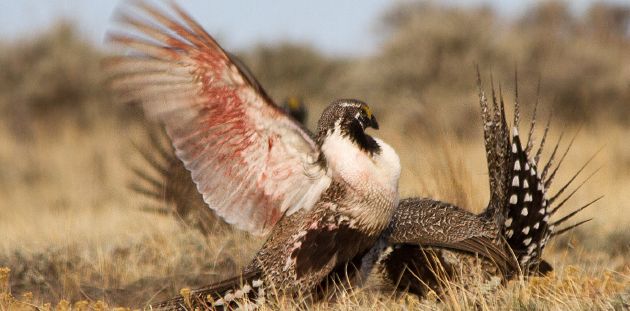
Species at Risk Act Part 4: The Success – or Failure – to Protect Canada’s Species at Risk Comes Down to Cooperation
May 4, 2025
- •
- •
- •
Without these changes, we are doomed to repeat these 25 years all over again.
By Nathan Schmidt
Read the PDF version here.
This is part four, the final of a series of WLA articles meant to highlight the Species at Risk Act, and how it often fails to protect wildlife on the brink.
Canada’s Species at Risk Act (SARA) will mark its 25th anniversary in 2027. Its implementation came with hope as Canada’s first attempt at dedicated species-at-risk legislation. But this milestone will be marked by 25 years of accelerated biodiversity loss caused largely by governments across Canada ignoring their responsibility to address the long-term effects of habitat destruction and disturbance.
As the last of four articles in this series about the Species at Risk Act (SARA), first published in the Wild Lands Advocate over one year ago, this is an opportunity to revisit the species mentioned over the previous three articles and discuss what must change to make SARA’s next 25 years something to celebrate.
In late 2023, the spotted owl was making news as the British Columbia government continued to approve the logging of old-growth forest. This forest was identified as critical habitat for the spotted owl and vital to the survival of the last wild-born animal left in Canada. At the same time, Environment and Climate Change Minister Steven Guilbeault and the government were dragging their feet over a decision to issue a SARA emergency order which would later be denied by the Governor-in-Council (federal cabinet).
The Federal Court of Canada ruled in June 2024 that the delay in recommending an emergency order for the spotted owl violated the federal Species at Risk Act, which means that future emergency order recommendations will have to be done more quickly. The federal court was also scathing in its criticism of the federal government, and writing about Minister Guilbeault’s delay, Justice Roy stated he found it “difficult to fathom how a period of more than eight months could be reasonable once the opinion has been formed that there exist imminent threats to the species’ survival or recovery. Either the threats are imminent or not,” he said.
“Either the threats concern the survival or recovery of the species or they do not. Once the opinion that the threats are about to happen, the Act says that the recommendation must be made. There is emergency.”
These words from Justice Roy are applicable to almost every other listed species-at-risk, whether it be trout, caribou, greater sage-grouse, or western chorus frogs. All are victims of unreasonable government delays, causing their already critically low numbers to plummet further.
In Alberta, caribou, greater sage-grouse, and three species of at-risk trout may benefit from the spotted-owl decision if their populations reach equally dire levels. Commenting in The Narwhal, Ecojustice lawyer Kegan Pepper-Smith, who represented the Wilderness Committee in their legal challenge, said the decision was “precedent-setting,” and will require future ministers to “act with the urgency required of the legislation and recommend an emergency order to cabinet right away.”
As discussed in previous articles, our courts have shown themselves to be the most consistent defenders of species-at-risk, interpreting the requirements of SARA to their intended effect and holding governments responsible for ignoring their own laws. This is largely thanks to the efforts of non-governmental organizations and the commitment of lawyers from organizations like Ecojustice, who work together to bring these challenges before the courts and wider public attention.
Moving towards 2027 and beyond, legal battles will remain a key part of SARA’s success or failure. As Pepper-Smith noted, one decision can have effects that go beyond the single species involved, compelling governments to act differently for all species facing similar threats.
But legal victories are only one part of the puzzle because courts are limited in how strongly they can compel governments to follow through. Justice Roy was not asked to consider the validity of the Governor-in-Council decision to deny the emergency order, nor did the Justice decide to impose concrete limits on future timelines for government decision-making. The reluctance or inability to issue strong remedies ensures the problems will persist.
This leaves the rest of the battle to be fought through public pressure, advocacy, and access to high-quality information. For spotted owls, the scrutiny of court proceedings caused the government to reconsider the amount of critical habitat designated in the updated draft recovery strategy. The new plan reinstated 200,000 hectares of critical habitat that, as reported by The Narwhal, had been removed from the 2023 version of the draft recovery strategy following consultations with the British Columbia government.
For the western chorus frog, good news has come in the form of habitat protection led by the Nature Conservancy of Canada (NCC). The group announced a significant land purchase in December 2024 connecting Gatineau Park to the Ottawa River, a critical wildlife corridor needed to maintain their already low population. The Quebec government offered some support, but the victory was mostly thanks to the efforts of the NCC and its supporters. Commenting in the Ottawa Citizen, NCC project manager Francisco Retamal Diaz spoke strongly about the community’s leadership role protecting the frog.
NGOs and engaged members of the public have become just as important as our courts in protecting species-at-risk and upholding SARA’s purpose throughout its first 25 years. Our governments have shown themselves to be vulnerable to pressure from industry and political priorities when it comes to balancing development and protection.
Adding to this is the trend of governments focusing power and information within increasingly small groups of deputy ministers, advisors, and cabinet ministers who operate closely with premiers and prime ministers, keeping tight control over the flow of information. At the same time, access to information processes have become almost impossible to navigate, with some information taking years to be delivered only to be redacted beyond usefulness. And that is if the information exists at all.
Lawyer Drew Yewchuk is very familiar with this situation from his time at the Public Interest Law Clinic in Calgary and now through his research at the University of British Columbia where he is a PhD student focusing on, among other things, information law, administrative secrecy, and species-at-risk.
He previously provided insight on the state of government compliance when it comes to following SARA’s timelines and disclosure requirements. When it was suggested that governments had fallen into a culture of complacency, Yewchuk went further, stating that “I don’t think this phrasing is accurate. I call it executive non-compliance or executive branch resistance.” To Yewchuk, successive governments have simply chosen to not fulfill tasks required of them by law and past court decisions.
He now sees a system where “cabinet confidentiality has grown out of control” and Canadians are completely left out of the decision-making processes of their own governments. Worse, the justification for this secrecy ranges from “uncompelling to incoherent.” Thankfully, lawyers like Yewchuk, along with journalists and advocates, are exposing these failures and the harm they cause to Canadians.
The success or failure of protecting species-at-risk in Canada ultimately comes down to cooperation between the provinces and the federal government and a willingness to treat the citizens they represent as equal partners in the sharing of information. The formula for this kind of cooperation and insight already exists in an agreement signed between the provinces and the federal government in 1996, six years before SARA became law.
The Accord for the Protection of Species at Risk (the Accord) was signed by all provinces and territories and the federal government following a series of public workshops for a national approach to protecting species-at-risk. As a result, each province and territory agreed to establish complementary legislation and programs for effective protection of species-at-risk throughout Canada. The specific contents listed as part of the prospective provincial legislation mirror much of the protections and mechanisms contained in SARA.
To date, almost every province and territory has either failed to pass this legislation into law or has underutilized their existing species-at-risk laws to the point that they are essentially useless. Since 2002, provinces have actively resisted taking responsibility for species-at-risk while the federal government has relied on delaying decisions to avoid jurisdictional conflict.
Since confederation, the Supreme Court has given our governments the tools and strong legal precedent to work together through cooperative federalism. This is especially important for species-at-risk, where the division of powers between the federal and provincial governments often collide. Unless the encroachment into someone else’s jurisdiction is significant, courts have consistently told governments to get along and do their jobs. The Accord is a symbol of this message and a tool our leaders seem to have completely forgotten about, or worse, ignored.
Reversing the negative trends of SARA’s first 25 years depends on the provinces passing and utilizing laws they agreed to implement over 30 years ago in the Accord. The limitations of federal jurisdiction mean that SARA protects less than five percent of Canada’s geography and its emergency provisions only prevent further destruction of critical habitat at the cost of the continuing conflict between the provinces and federal government.
At the same time, there must be political will to change the approach to access to information regimes and dismantle the tight grip governments across Canada have on knowledge that is not theirs to keep. Without these changes, we are doomed to repeat these 25 years all over again.

